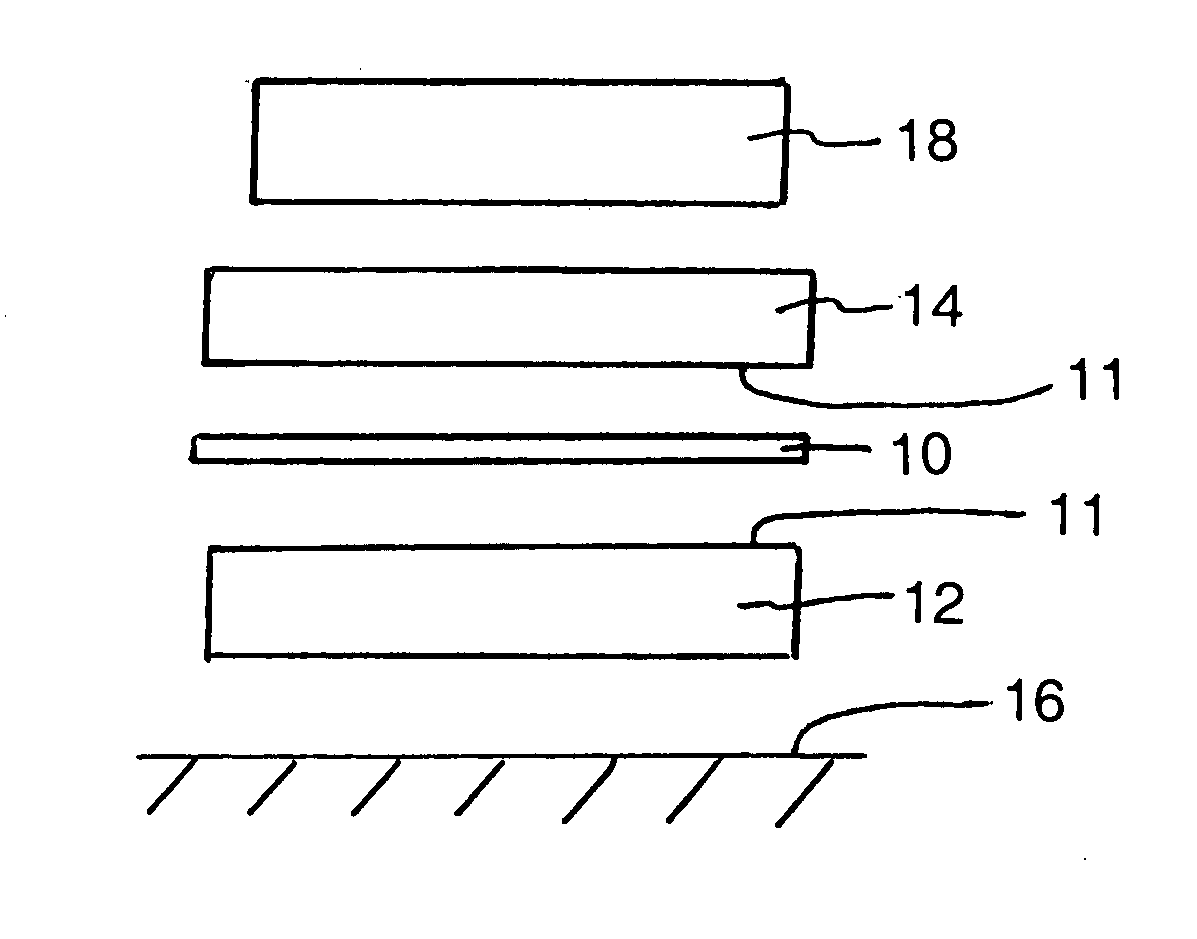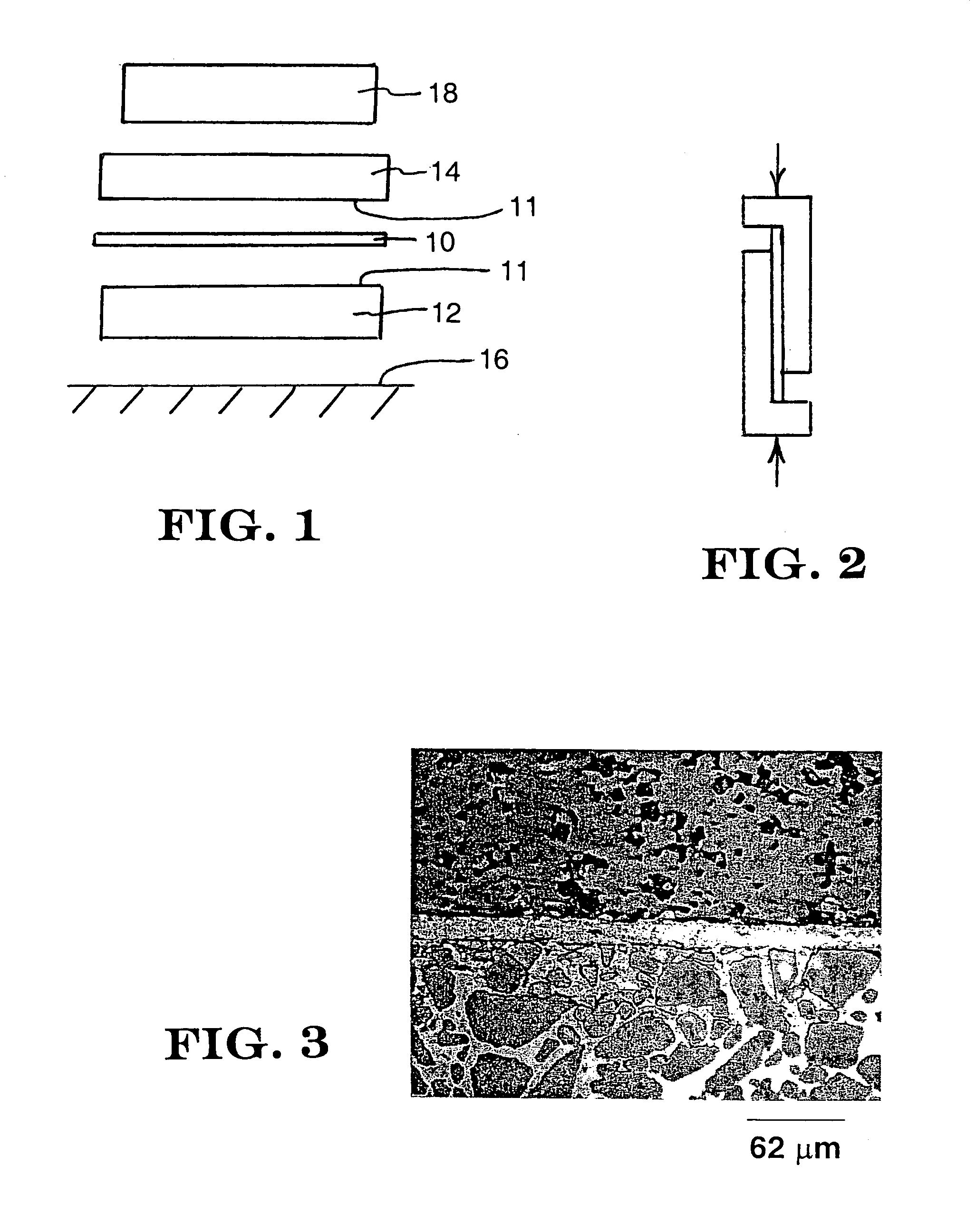Method for brazing ceramic-containing bodies, and articles made thereby
a technology of ceramics and bodies, applied in the field of techniques for joining ceramics, can solve the problems of brittle behavior, weak metallurgical joints, and material difficulty in polishing to the exactness required of mirror applications
- Summary
- Abstract
- Description
- Claims
- Application Information
AI Technical Summary
Benefits of technology
Problems solved by technology
Method used
Image
Examples
example 1
[0063]This example demonstrates that a sheet or plate of silicon metal may be brazed to a RBSC substrate.
[0064]Specifically, a Grade SSC-702 RBSC plate and a silicon metal plate were cleaned with isopropanol and brazed to one another in accordance with the above-described brazing procedure. No metallization was applied to either bonding surface; they were left uncoated.
[0065]The brazed assembly was then ground and polished on the silicon surface using techniques well known in the art to produce a silicon-surfaced mirror. The roughness of the resultant surface is under few nanometers and the surface flatness can be of the order of fraction of a wave (where the wavelength is 630 nm).
example 2
[0066]This example demonstrates another embodiment of brazing a sheet or plate of silicon metal to a RBSC substrate.
[0067]Specifically, a Grade HSC-703 reaction-bonded silicon carbide plate was cleaned with acetone. The RBSC plate was then metallized with aluminum. Specifically, aluminum was deposited by a magnetron sputtering process to a thickness of about 25 microns. The silicon metal plate was not coated with aluminum; it was left uncoated. Finally, the Brazing Procedure as described above was conducted, thereby bonding the RBSC and silicon plates to one another.
example 3
[0068]This example demonstrates the efficacy of brazing single crystal silicon to a ceramic composite substrate using the instant techniques. The materials and procedures were substantially the same as in Example 1 except as noted below.
[0069]The bulk silicon was standard polished single crystal silicon measuring about 2.75 inches long by about 2.5 inches wide by about 0.029 inch thick. The substrate was Grade SSC-702 reaction bonded silicon carbide (M Cubed Technologies) in a ground condition and measuring about 4 inches square by about 0.5 inch thick. The pressure applied by the 1250 gram tool steel dead load was about 0.68 psi.
[0070]Upon cooling following thermal processing, the polished single crystal silicon wafer was found to be strongly bonded to the RBSC substrate. No macroscopic cracking was observed. FIG. 4 is a perspective view photograph of the brazement, and it shows the polished silicon wafer 41, some exposed portions of the braze material 43, and some exposed portions...
PUM
| Property | Measurement | Unit |
|---|---|---|
| Fraction | aaaaa | aaaaa |
| Percent by mass | aaaaa | aaaaa |
| Composition | aaaaa | aaaaa |
Abstract
Description
Claims
Application Information
 Login to View More
Login to View More - R&D
- Intellectual Property
- Life Sciences
- Materials
- Tech Scout
- Unparalleled Data Quality
- Higher Quality Content
- 60% Fewer Hallucinations
Browse by: Latest US Patents, China's latest patents, Technical Efficacy Thesaurus, Application Domain, Technology Topic, Popular Technical Reports.
© 2025 PatSnap. All rights reserved.Legal|Privacy policy|Modern Slavery Act Transparency Statement|Sitemap|About US| Contact US: help@patsnap.com



